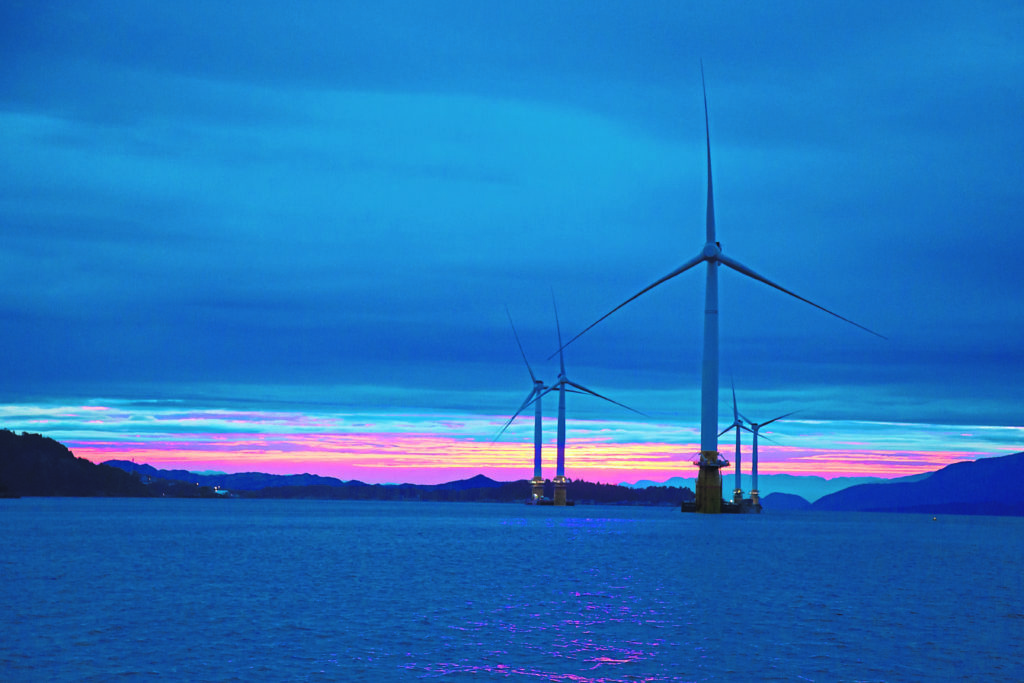
For the past 20-plus years I’ve watched the birth of offshore wind power in the North Sea, starting with small turbines planted in water so shallow that it seemed almost possible to wade out to them.
They were laughed at by those who thought they knew better, including wags in the oil and gas industry, some of whom I had uncomfortable encounters with during my time as founder/chairman of Aberdeen Renewable Energy Group.
Today’s industry is a solar system away from the late ’90s. Many thousands of turbines have been planted in the North Sea, with the largest count credited to the UK.
Turbine power ratings have rocketed. It was amazing news when RePower of Germany launched the first 5MW turbines in 2005.
Today the design conversation is about machines rated 20MW or so, while the 12MW beast developed by GE Renewable Energy has become reality.
North Sea wind has been a consistently big headline-grabber with critics often wagging the finger, pronouncing that offshore wind will be a financial and environmental disaster.
And North Sea oil and gas, once dismissive, then perhaps a little fearful, is now looking to the newcomer to solve some of its own carbon footprint and production efficiency challenges. It may even be of value to offshore oil and gas decommissioning as a source of competitive power.
Many of us don’t necessarily realise that the offshore wind story has in fact barely begun.
Even though it has become a multi-billion-pound, multi-gigawatt industry, offshore wind accounts for just 0.3% of global electricity supply today. This is despite the deployment of turbines at sea growing nearly 30% per year since 2010, mostly in the North Sea, which accounts for 80% of the current global market.
According to a new report just published by the International Energy Agency, based on current and proposed policies, global offshore wind capacity will rocket 15-fold over the next 20 years, turning it into a $1 trillion business. That equates to a growth rate of 13% per annum.
The IEA reckons offshore wind not only helps put the global power sector on track for full decarbonisation, it is set to become the leading source of electricity in Europe and be a key enabler to the hydrogen economy.
Moreover, the IEA states that offshore wind will become competitive with fossil fuels within the next decade, as well as with other renewables.
Offshore wind’s cost has dropped dramatically and is set to fall further. But the IEA warns that the cost of borrowing has a major role to play in achieving further cost reductions.
Money costs the industry 8% on average; the IEA wants this slashed to 4% and believes this will achieve enormous leverage, accelerating investment in new generating capacity.
Most progress seems to have been made in the EU, where favourable policy frameworks are now enabling projects to secure the kind of low-cost financing that makes the difference.
Besides, Big Money is rather keen to green-wash its own credentials, so 4% should be possible.
It turns out that the latest offshore wind projects have capacity factors of 40-50%, as larger turbines and other technology improvements are helping to make the most of available wind resources.
“At these levels, offshore wind matches the capacity factors of gas- and coal-fired power plants in some regions,” claims the IEA. “Its capacity factors exceed those of onshore wind and are about double those of solar PV.”
However, in an attempt to reduce the impact on the environment, offshore wind projects are increasingly being examined by government agencies to ensure they cover all the bases in their quest for consent.
There is growing unease about turbines among other users of the sea, not least fishermen who have had to put up with 50 years of North Sea oil and gas intrusion, large-scale gravel extraction and uneasy relationships with at least some wind farm developers.
That said, the future for offshore wind as painted by the IEA looks very bright indeed and, for a while yet, Europe will continue to lead the way.
Recommended for you
